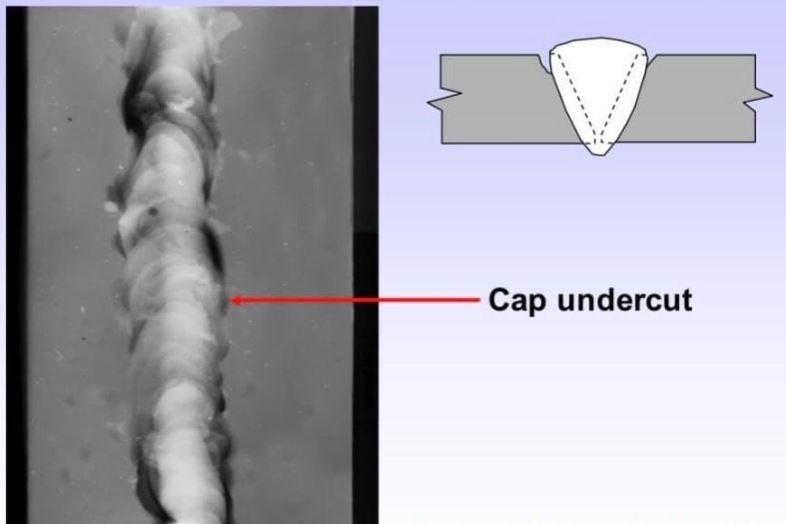Preventing Weld Undercut Made Easy: Trick Techniques Unveiled
Preventing Weld Undercut Made Easy: Trick Techniques Unveiled
Blog Article
Mastering the Art of Welding: How to Avoid Undercut Welding Issues for Flawless Construction Outcomes
Performance and accuracy are paramount worldwide of welding, where also the smallest blemish can compromise the architectural honesty of a made piece. One common obstacle that welders face is damaging, a defect that can lead and deteriorate a weld joint to expensive rework. By recognizing the origin of undercut welding and executing efficient strategies to stop it, welders can boost their craft to brand-new levels of excellence (Preventing weld undercut). In the pursuit of perfect construction results, understanding the art of welding to stay clear of undercut issues is not simply a skill but a requirement for those pursuing excellence in their work.
Comprehending Undercut Welding

To stop undercut welding, welders must make sure appropriate welding criteria, such as changing the existing, voltage, travel rate, and maintaining the proper electrode angle. Furthermore, making use of the proper welding strategy for the certain joint setup is essential. Employing weaving activities or backstepping methods can assist make certain proper weld steel deposition and minimize the likelihood of undercut development. Regular assessment of welds throughout and after the welding procedure is also vital to capture any kind of undercut early and make needed modifications to stop more problems. Preventing weld undercut. By comprehending the reasons for undercut welding and executing preventive measures, welders can achieve top notch, structurally sound welds.
Sources Of Undercut in Welding
Understanding the variables that add to damage in welding is vital for welders to generate top quality, structurally sound welds. When the weld steel does not properly load the groove developed in between the base metal and the formerly transferred weld steel, damaging happens. Several variables can lead to damage in welding. One typical reason is extreme warmth input. Welding at high temperature levels for extensive periods can result in the base steel thawing greater than wanted, causing damage. Poor welding existing or wrong welding speed can additionally add to undercut. Insufficient current might not provide adequate heat to melt the base and filler metals effectively, while too much rate can protect against correct blend, triggering undercut. In addition, improper electrode angles or incorrect lantern adjustment strategies can produce locations of low weld metal deposition, advertising undercut. Recognizing these causes and applying appropriate welding strategies can aid prevent damaging concerns, guaranteeing solid and long lasting welds.
Methods to stop Undercutting

To minimize the risk of undercutting in welding, welders can employ critical welding methods focused on boosting the quality and integrity of the weld joints. One effective method is to adjust the welding parameters, such as voltage, existing, and travel rate, to make sure appropriate warmth input and deposition. Maintaining an appropriate electrode angle and making certain regular traveling rate can also help protect against undercut. In addition, utilizing the right welding method for the certain joint configuration, such as weave or stringer grains, can add to decreasing damaging. Preventing weld undercut.
Employing back-step welding methods and controlling the weld bead account can additionally help distribute warmth uniformly and decrease the risk of undercut. Routine evaluation of the weld joint during and after welding, as well as applying high quality assurance measures, can assist in attending i loved this to and spotting undercutting problems quickly.
Value of Proper Welding Criteria
Picking and keeping appropriate welding specifications is vital for accomplishing effective welds with marginal defects. Welding criteria refer to variables such as voltage, current, take a trip speed, electrode angle, and shielding gas circulation rate that straight impact the welding process. These parameters need to be very carefully adjusted based on the type of material being welded, its thickness, and the welding strategy utilized.
Correct welding specifications guarantee the right amount of warm is put on melt the base metals article source and filler product uniformly. If the specifications are established expensive, it can bring about excessive heat input, triggering distortion, spatter, or burn-through. On the other hand, if the criteria are also low, insufficient blend, absence of penetration, or undercutting might happen.
Top Quality Guarantee in Welding Procedures

Conclusion
To conclude, mastering the art of welding requires a complete understanding of undercut welding, its reasons, and techniques to stop it. By making certain appropriate welding criteria and applying quality control techniques, remarkable construction outcomes can be achieved. It is essential for welders to continually pursue quality in their welding operations to prevent undercut problems and produce premium welds.
Undercut welding, a typical flaw in welding procedures, happens when the weld metal does not properly fill the groove and leaves a groove or anxiety along the bonded joint.To protect against undercut welding, welders ought to ensure correct welding specifications, such as readjusting the existing, voltage, traveling speed, and keeping the right electrode angle. Inadequate welding wrong or current welding rate can additionally add to damage.To reduce the risk of damaging in welding, welders can employ strategic welding strategies aimed at enhancing the top quality and honesty of the weld joints.In verdict, understanding the art of welding needs a thorough understanding of undercut welding, its reasons, and techniques to avoid it.
Report this page